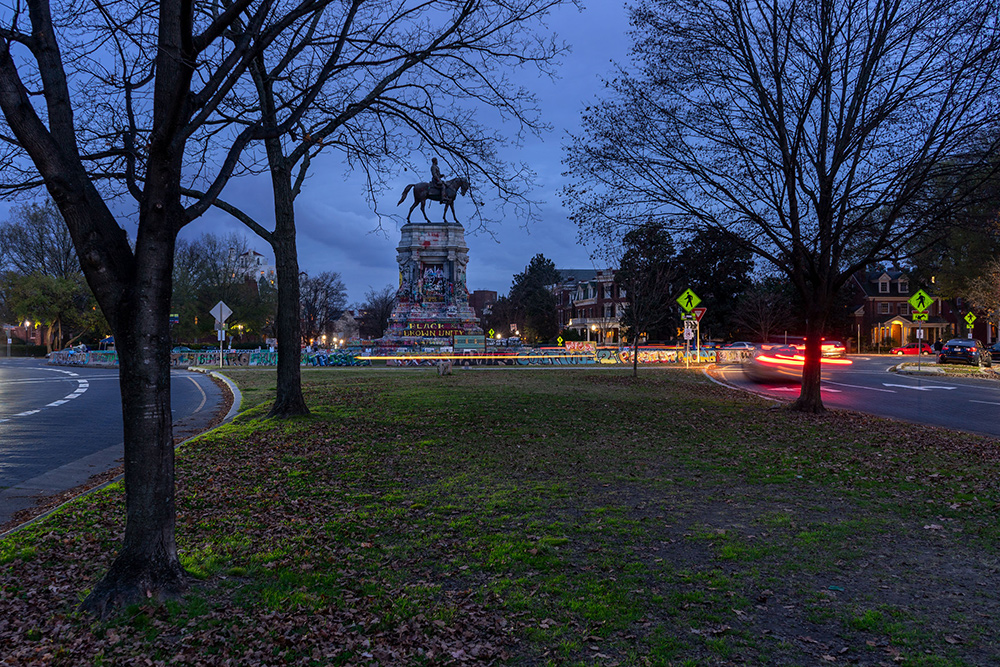During the lull of the 2020 pandemic, New York photographer Brian Rose did some serious sleuthing on his family’s Virginia roots.
And made some startling discoveries.
Both sides of his family tree reached back hundreds of years – one, all the way to Jamestown in 1608, a year after the colony was established by the British. “The Europeans were taking land away from Native Americans – and you can’t undo that,” he says. “Those first years, they were in constant battles with Native American along the James River, and my ancestors were involved in that.”
He found other issues to be reconciled as well. A number of his ancestors interacted with the landed gentry, farmed large plantations in Virginia, and owned enslaved workers.
“I look at the First Families of Virginia on one hand as the founders of the country with ideas about freedom and equality, but at the same time they were oligarchs,” he says. “They were creating a system that didn’t include Blacks except as slaves or workers.”
He views Thomas Jefferson as Virginia’s ultimate paradox. “We had to go through a time period of realizing that Jefferson was a slave owner,” he says. “He did not have the best ideas about the Africans brought over to the colonies in his “Notes on the State of Virginia.”
In that 1785 publication, Jefferson argued that Blacks were inferior to whites and that their inferiority could not be explained by their condition of slavery, writing: “The improvement of the blacks in body and mind, in the first instance of their mixture with the whites, has been observed by every one, and proves that their inferiority is not the effect merely of their condition of life.”
Jefferson was not the only Virginian with that perspective. It was common across the state and in its capital during the 18th and 19th centuries. “Richmond was engaged in preserving the gentry that had the power,” Rose says. “It was a systematic thing that had nothing to do with what is in the Bill of Rights – they wanted to maintain a certain status.”
All that was in the back of Rose’s mind as he photographed Richmond’s graffiti-strewn statues of Confederate generals during the summer and fall of 2020, for his new book, “Monument Avenue.”
“The way I photographed it, I did it with the same descriptive quality as I do for architecture,” he says. “I’m acknowledging the graffiti and the activity, but people need to understand the monumentality and power that needs to be undone now.”
Opposite one photograph – a sidewalk scrawled with George Floyd’s name – is a 1931 quote from W.E.B. Du Bois titled “Confederate Monuments”:
“The most terrible thing about war, I am convinced, is the monuments – the awful things we are compelled to build in order to remember the victims. In the South, particularly, human ingenuity has been put to it to explain the Confederacy on its war monuments. Of course, the plain truth of this matter would be an inscription something like this: ‘Sacred to the memory of those who fought to Perpetuate Human Slavery.’”
On Richmond’s Arthur Ashe Boulevard, Rose photographed the headquarters of the United Daughters of the Confederacy, an organization that systematically rewrote school textbooks for a favorable view of the Confederacy, the mythology of the Lost Cause, the concept of States’ Rights – and deemphasized slavery as a cause for the Civil War.
“I photographed the UDC building because it was an important part of the story – they funded the statues,” he says. “There had been a fire in their building, and in the photograph, you see the smudges from the smoke.”
Farther north at the Virginia Museum of Fine Arts, is a statue by Kehinde Wiley called “Rumors of War.” It was unveiled in December 2019 and modeled on J.E.B. Stuart’s statue on Monument Avenue. “I juxtaposed the two statues in the book,” the photographer says. “Now Stuart’s gone and Wiley’s statue is still there.
Before his equestrian statue was removed by the city in 2020, Stuart was portrayed as a swashbuckling Confederate general. But the Wiley statue is a young black man, contemporary and insouciant, with his head thrown back, also mounted on a horse. “You sense that times have changed and this is the age of the present,” he says. “It was a prescient piece of work by Wiley.”
At its unveiling, The Washington Post reported that Wiley was “greeted by the throng of Richmonders like a rock star – and spoke of the Monument Avenue figures that inspired him.”
“I saw some extraordinary sculpture. People took a lot of time to make something powerful. Beautiful. Elegant. Menacing,” Wiley said. “We can do better.”
Now, he said, is a time to appropriate the images of the past and update them for a new era. “There’s something moving in the culture. There’s something changing in the winds,” the sculptor said. “I’m tired of the dysfunction. I’m tired of the strife.”
As for Monument Avenue, Rose is haunted by its past, and knows that future residents will have little to no comprehension of what the promenade once represented. “It will be hard for someone who never saw the statues – they’re not going to think anything of it,” he says. “There will be the large mansions and the allée of trees, and a young person will think it’ll just be that.”
For him, though, the ghosts of Monument Avenue’s past will always be present. “I cannot see it without the statues there,” he says.
Or as William Faulkner wrote: “The past is never dead; it’s not even past.”
Rose opens his newest book with that quote.
http://www.brianrose.com/monument.htm
[slideshow id=2344]

